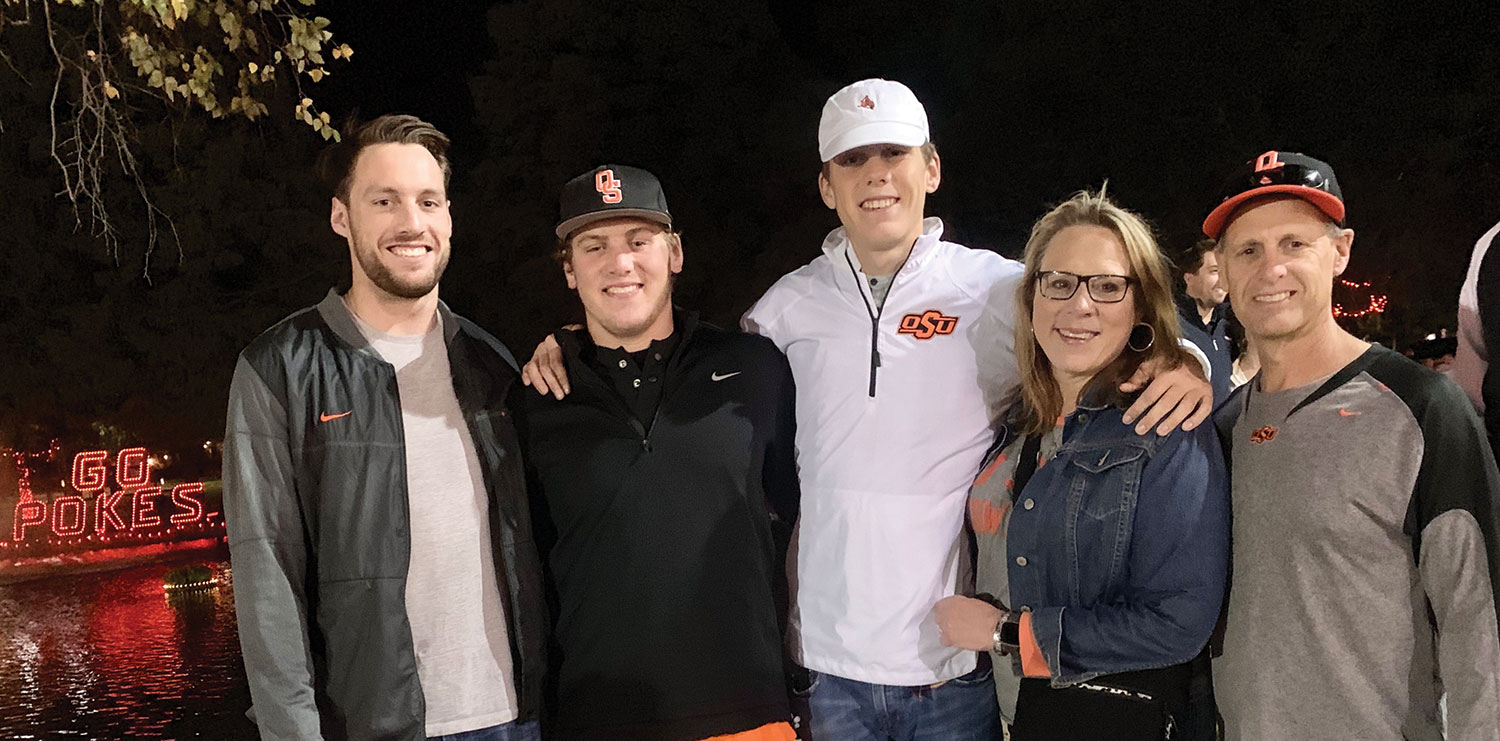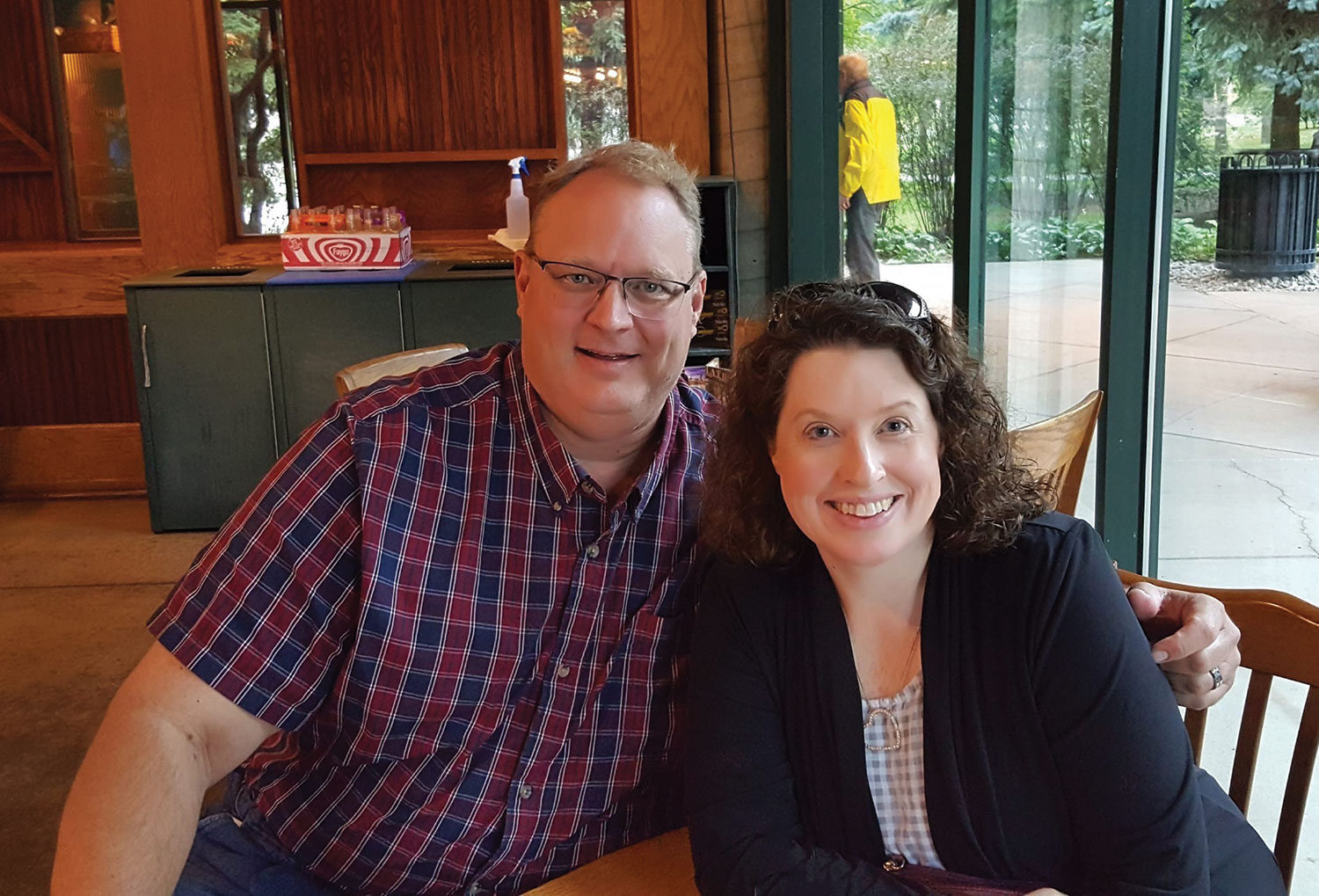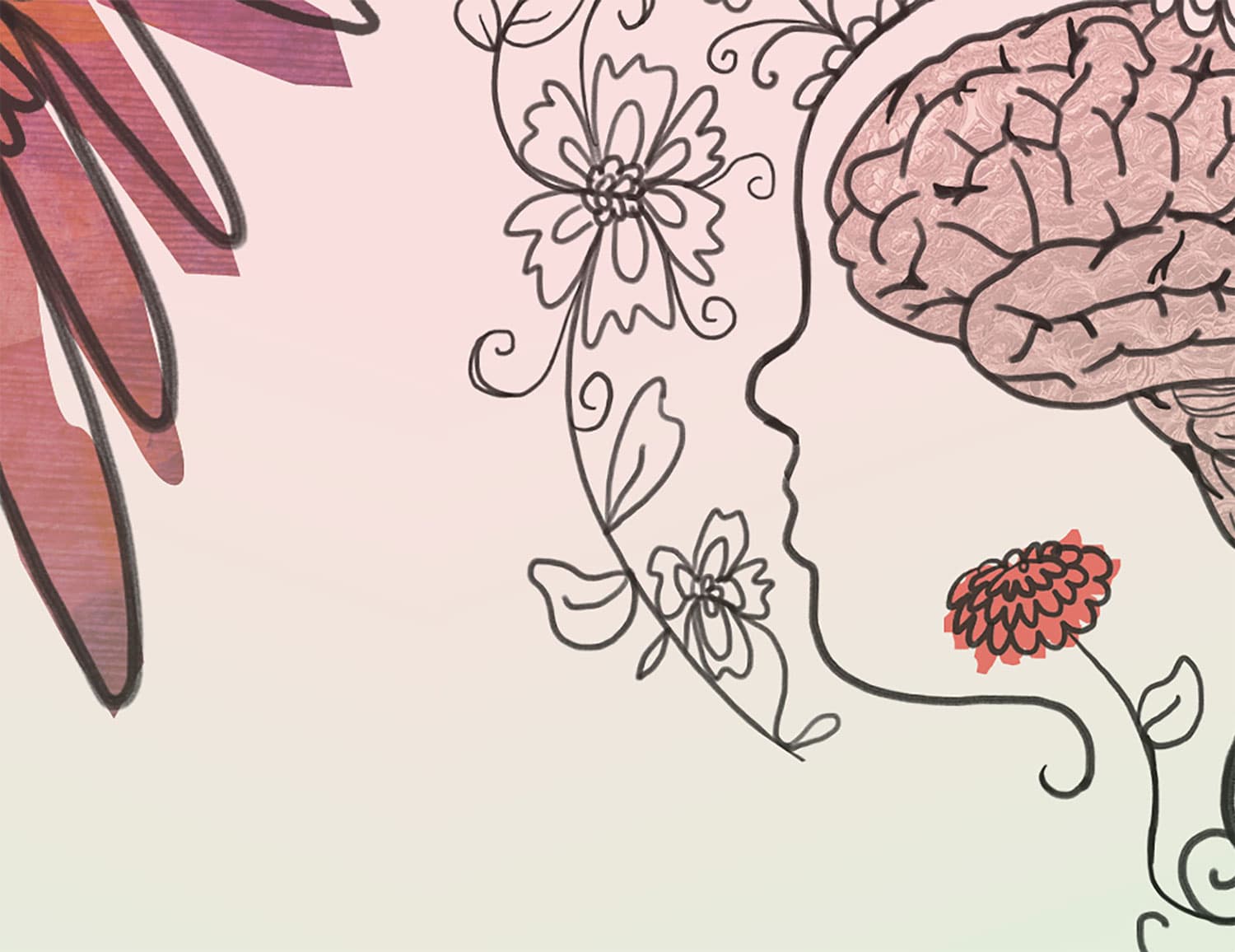One is a pastor s wife in Michigan, the other a lawyer in rural Oklahoma. Both were treated for breast cancer. But what brought Sandy Smith and Kimberlee Spady together, spurring a lifelong friendship, was a shared tragedy: In 2009, both lost a son to diffuse intrinsic pontine glioma (DIPG) a lethal cancer of the brain.
Every year, about 100 to 300 people in the U.S. are diagnosed with DIPG. Most are between 5 and 7 years of age. DIPG affects an area of the brain stem that controls vital functions, such as breathing, and intertwines with healthy brain tissue so the tumor cannot be surgically removed. Chemotherapy also doesn t work. The only effective treatment is radiation, which typically extends life by just a few months.
Read More Online
Learn about other parents efforts to fuel collaboration and accelerate research on diffuse intrinsic pontine glioma in the online story, A Unified Strategy.
Approximately 10% of people with DIPG live two years past diagnosis, and fewer than 1% survive five years or more, a statistic that has remained unchanged for decades. Research to find new therapies has stalled in the past, in part, because scientists had very little tumor tissue to analyze.
However, as Smith and Spady would learn, there is a time when tumor tissue can be collected at the child s death. Both mothers, now 52 years old, chose this option when their sons died. Through online discussion forums, the pair connected with other parents who were interested in exploring tissue donation for their children. The mothers also reached out to researchers at labs that focused on DIPG to help facilitate the process for those families who wanted to donate tumor tissue.
These grassroots efforts raised awareness of the value of tissue donations. Today, other brain tissue bank initiatives provide guidance and direction for parents who are faced with making the same difficult decision. Scientists have used these so-called legacy gifts to create DIPG cell lines to help advance understanding of a devastating disease.

Kimberlee and Ken Spady, at right, are shown with their sons, from left, Jacob, Seth and Luke, at an October 2019 event at Oklahoma State University in Stillwater, where Kimberlee and Ken met as students. Their son Caleb died from brain cancer in 2009. Photo courtesy of Kimberlee Spady
Shared Sorrow
In spring 2008, Spady was just starting to get into a routine after returning to work part-time. A lawyer and mother of four living in Hinton, Oklahoma, Spady had been diagnosed with stage II breast cancer in March 2007 at age 39. She had surgery to remove both breasts and several lymph nodes, followed by chemotherapy and chest radiation. In some ways, Spady was lucky. She was diagnosed with early-stage HER2-positive breast cancer just four months after Herceptin (trastuzumab) had gained U.S. Food and Drug Administration approval for treating that stage and type of breast cancer. Spady started on monthly infusions of Herceptin to help reduce the chance of her cancer returning. But then another crisis hit.
On April 3, 2008, Spady s husband, Ken, took their 10-year-old son, Caleb, to the ophthalmologist. On the baseball field a few days earlier, Caleb had been frustrated because he was missing routine plays. He finally said to Ken, I m seeing two balls. I don t know which one to catch, Spady says.
The next day, the ophthalmologist sent Caleb for an MRI, which revealed a mass at the base of his brain. Caleb s double vision, a common DIPG symptom, was likely caused by the tumor s growth in the brain stem, which puts pressure on nerves that control eye and face muscles.
In the wake of her son s diagnosis, Spady meticulously researched the condition. I can remember telling my friends that Google is finally going to answer the question, How to cure Caleb Spady? before this all ends, she says. Yet in every article she read, the news was grim: DIPG is fatal and has no promising treatments.
Despair gave way to a single ray of hope when Spady came across a CaringBridge website page that was set up by a family on a remarkably similar journey. In October 2007, another boy had been diagnosed with DIPG. That diagnosis came less than a week after his mother, Sandy Smith, learned she had triple-negative breast cancer. Spady reached out right away.
On that spring day in 2008, Smith read Spady s message in Bethesda, Maryland, where her 6-year-old son, Andrew, was taking part in a brain imaging study at the National Institutes of Health (NIH) the same study Caleb was scheduled to participate in later that month. At the time, Smith, who lives in DeWitt, Michigan, was about to start radiation treatment after having a lumpectomy and completing chemotherapy. The two mothers got to know each other quickly through emails, phone chats and moderating an online discussion group that provided support for parents whose children had DIPG. That summer, the women attended a pediatric brain cancer conference together in Chicago. We even shared a room, Smith says. I can t believe I did that now, because we had never met.

Sandy Smith and her husband, Shawn, in 2018. Photo courtesy of Sandy Smith
A Difficult Decision
Smith and Spady first learned about postmortem donations when a father brought up the possibility in a thread on the discussion group. At the time, DNA sequencing technology was becoming more sophisticated, with the ability to more thoroughly probe tumors for potential cancer-causing mutations.
But researchers had limited access to the brain tumor tissue of children with DIPG. They knew little about the biology of the disease. It was really this black box, says Michelle Monje, a pediatric neuro-oncologist at Stanford University in California who has studied DIPG since 2008.
At the time, doctors were using experimental treatments that were just entering clinical testing for adult glioma on children with DIPG under the assumption that DIPG was similar, just located in a different spot, says Katherine Warren, clinical director for pediatric neuro-oncology at Dana-Farber Cancer Institute and Boston Children s Hospital. Warren led the NIH study that Caleb and Andrew were signed up to participate in before she joined Dana-Farber. But later research would show that DIPG was molecularly distinct from adult gliomas, a realization made possible, in part, because of parents and children s willingness to make postmortem brain tumor tissue donations.
Still, the idea of removing a child s brain after death was initially horrifying to me, Smith says. But I understood there was no other way for researchers to look at the tumor. Through the online forum, Smith and Spady found stories of other families who had donated tumor tissue to a handful of places such as the NIH and St. Jude Children s Research Hospital in Memphis, Tennessee. The more they learned, the more they became convinced that DIPG research could not move forward without patient tissue.
They asked their sons oncologists about the options and talked it over with their boys. Spady recalls a conversation in the summer of 2009 with 11-year-old Caleb as he neared his final days. We were sitting on the couch or something, and he said, If I die, can we send my brain to Dr. Warren so she can study it so maybe other kids won t have to go through this?
That same summer, Smith read a moving story about Dylan Jewett, a 5-year-old boy whose DIPG was extremely aggressive. His parents decided to forgo treatment for their son and asked if they could offer Dylan s brain to research when he died. In 2011, Monje and her colleagues used Dylan s brain tissue to develop DIPG cell lines, the first to be reported in the literature.
In July 2009, Caleb s health took an unexpected turn for the worse as his father drove him from Oklahoma to Memphis to participate in a clinical trial at St. Jude. Caleb s health had declined so much that he could not proceed with the study. Unbelievably, Caleb s mother was at Integris in Oklahoma City having surgery for stage IIA colon cancer the same day. After returning home from St. Jude, Caleb was admitted to Integris, and Spady was moved to the children s wing to be close to him. Both were released from the hospital. But Spady was readmitted when her colon ruptured. She was having surgery when her son died at home on July 21, 2009.
At Spady s request, Smith called Warren to let her know of Caleb s rapidly declining condition so they could prepare for the tumor tissue donation. In addition, after the Smiths decided to donate Andrew s tissue, Spady spoke with Andrew s oncologists and DIPG researchers to aid in the process. Andrew died at Sparrow Hospital in Lansing, Michigan, on December 4, 2009. The Smiths donated his brain tissue to Warren s lab at the NIH.
What Do I Do?
Before and after their sons deaths, Smith and Spady worked with other DIPG families to educate them about postmortem brain tissue donations. By word of mouth, parents would contact us and say, OK, my kid is about to die. What do I do? says Spady. We would reach out to the docs we knew were seeking tissue and say, What do you need? Is this timeframe going to work? Can we get the tissue to you?
The logistics are no small feat. The brain tissue needs to go into sterile media within hours of the child s death for same-day shipping to the designated lab. Yet many children die at home, away from medical centers at times in the middle of the night or over the weekend. That means having tubes, media and shipping containers ready ahead of time and summoning on-call staff to collect the child s tissue after loved ones have said their goodbyes and the child has died. I wrote out steps, says Spady, whose husband and a friend drove her son s body to a hospital an hour away for tissue retrieval. There was a note on the kitchen counter for when it happened, who they needed to call, what they needed to do.
Smith and Spady also got the word out to researchers and doctors helping them understand that many families wanted this option. In the fall of 2011, the two discussed postmortem tissue donation at a session coordinated by Oregon Health and Science University, which was held during a meeting of the Children s Oncology Group, a clinical trials group supported by the National Cancer Institute.
Today, other efforts, such as the International DIPG Registry, have brought hospitals and researchers together to facilitate tissue donations and analyze data through worldwide networks. Since its launch in 2012, the International DIPG Registry has gathered scans and tissue samples from more than 1,000 DIPG patients. Of these patients, 345 have provided autopsy or biopsy tissue.
These donations, and those of other parents and children, have helped to enrich researchers understanding of the disease. Research published in 2010 and 2011 showed DIPG was biologically distinct from adult gliomas. In 2012, a pair of studies showed that up to 80% of DIPGs have mutations in proteins called histones, DNA-packaging proteins that control which genes get turned on and hold clues to how their misbehavior could give rise to cancer cells that grow uncontrollably. This was the first time an epigenetic mutation, which is a change that doesn t affect the DNA sequence but influences how the genetic code is expressed, was shown to directly drive cancer. The discovery would add to the understanding of the disease and point to a potential new target for therapy, says Warren.
For their part, Smith and Spady helped families whose children had brain tumors connect with researchers. A few of the DIPG cell cultures from that time are still in use today. We ve shared them with at least 150 labs around the world, Monje says. You go to scientific meetings and see these cells that people are still studying, and they re cases that Sandy and Kim helped us to generate.
Moving Forward
Smith s and Spady s decisions to donate their sons tumor tissue and to educate other families were fueled in large part by their desire to help advance science. Just as important as helping other families was making sure doctors know that parents aren t so fragile, even though we re sitting there in tears all the time, says Spady, who urges doctors to discuss tissue donations with patients.
It s been more than 10 years since their sons died. Smith volunteers for several organizations, including at Sparrow Hospital, where she coordinates volunteers on the pediatric floor and pediatric intensive care unit. She and her husband, Shawn, are also fostering an infant and are in the process of adopting her 4- and 5-year-old siblings. Smith believes their experiences with grief put them in a unique position to help these children, who have faced their share of difficulties and are grieving in a different way for the lives they once knew.
Spady, who works full-time as a lawyer, takes time to speak with medical students and residents at Oklahoma University College of Medicine in Oklahoma City about the grieving process and palliative care for kids with cancer. She, her husband and their three sons also help with events at the local high school, where several children have been affected by cancer, in honor of Childhood Cancer Awareness Month every September.
Research efforts continue. In research published in November 2019, a team led by Monje, Warren and NIH researcher Craig Thomas used patient-derived cell cultures, including one made from Andrew s tissue, to screen potential drugs for DIPG and related tumors. The study identified a new two-drug combination that could enter clinical testing for DIPG this year.
I think we re moving rapidly towards a more effective treatment strategy for DIPG. It s a very exciting time, says Monje, who points out that therapeutic strategies are just now beginning to be tested in the clinic. We re certainly not there yet, but all of that progress is only enabled by patient donations of tumor tissue.
Cancer Today magazine is free to cancer patients, survivors and caregivers who live in the U.S. Subscribe here to receive four issues per year.





